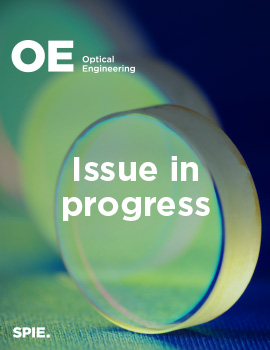James Gunn, Michael Carr, G. Edward Danielson, Ernest Lorenz, Richard Lucinio, Victor Nenow, J. Devere Smith, James Westphal, Donald Schneider, Barbara Zimmerman
Optical Engineering, Vol. 26, Issue 8, 268779, (August 1987) https://doi.org/10.1117/12.7974149
TOPICS: Telescopes, Cameras, Charge-coupled devices, Multichannel imaging systems, Quantum efficiency, Imaging systems, Imaging spectroscopy, Spectroscopy, Astronomy, Observatories
We describe an astronomical camera for the 200-in. Hale telescope using four 800 X800 Texas Instruments CCDs in an optical arrangement that allows imaging of a contiguous 1600-pixel-square region of sky. The system employs reimaging optics to yield a scale of 0.33 arcsec per pixel, a good match to the best seeing conditions at Palomar Observatory. Modern high-efficiency coatings are used in the complex optical system to yield a throughput at peak efficiency of nearly 50% (including the losses in the telescope), corresponding to a quantum efficiency on the sky of about 30%. The system uses a fifth CCD in a spectroscopic channel, and it is possible to obtain simultaneous imaging and spectroscopic observations with the system. The camera may also be used in a scanning mode, in which the telescope tracking rate is offset, and the charge is clocked in the chips in such a manner as to keep the charge image aligned with the optical image. In this way, a survey for high-redshift quasars has been carried out over a large area of sky. The instrument has produced images for the most distant clusters of galaxies yet discovered as well as spectra of the most distant galaxies yet observed.



 Receive Email Alerts
Receive Email Alerts